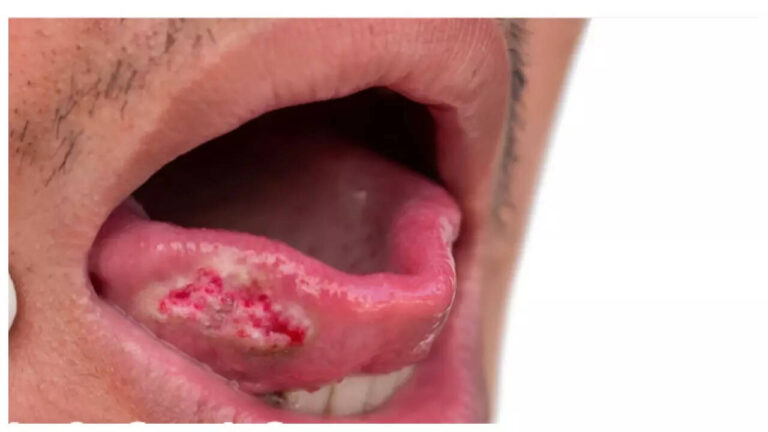
The World Health Organization (WHO) and the International Agency for Research on Cancer (IARC) have officially classified the Hepatitis D virus (HDV) as carcinogenic to humans. This places HDV alongside Hepatitis B and Hepatitis C as major causes of liver cancer. The reclassification is based on increasing evidence of HDV’s severe health risks, especially its role in accelerating liver damage and cancer in co-infected individuals. This important update emphasises the urgent need for better awareness, expanded testing, and improved treatment options to combat HDV and reduce the global burden of liver cancer and liver-related deaths.
Understanding Hepatitis D Virus (HDV) and its symptoms
Hepatitis D is a unique and dangerous virus that requires the presence of Hepatitis B virus (HBV) to infect and replicate. HDV cannot infect people on its own; it “hijacks” the HBV infection process, resulting in more severe liver disease when both viruses coexist.Symptoms of HDV infection often overlap with other liver diseases and can be easily overlooked. Common signs include:
- Fatigue and weakness
- Nausea and loss of appetite
- Abdominal pain or discomfort, especially in the upper right side
- Dark-coloured urine
- Yellowing of the skin and eyes (jaundice)
- Unexplained weight loss
- Fever
Because symptoms may be mild or mistaken for other illnesses, many individuals delay seeking medical care, increasing the risk of serious liver damage.
What causes Hepatitis D virus infection
HDV spreads primarily through direct contact with infected blood or bodily fluids. Common modes of transmission include:
- Infected blood transfusions or blood products
- Unprotected sexual contact with an infected person
- Sharing needles or syringes among people who inject drugs
- Unsafe medical procedures involving non-sterile equipment
- Mother-to-child transmission during childbirth (less common)
Because HDV can only infect individuals already carrying HBV, anyone with chronic hepatitis B is at risk of contracting HDV.
Who is at risk of Hepatitis D Infection
Populations at higher risk for HDV infection include:
- People living in regions with high HBV prevalence such as parts of Asia, Africa, and the Amazon Basin
- People who inject drugs and share needles
- Patients receiving haemodialysis or undergoing frequent blood transfusions
- Individuals with multiple sexual partners or those who engage in unprotected sex
- Infants born to mothers infected with both HBV and HDV
Awareness and screening in these groups are essential for early detection
Global impact: How widespread is Hepatitis D
According to the WHO, over 300 million people worldwide are infected with hepatitis B, C, or D, contributing to about 1.3 million deaths annually, mostly from liver cirrhosis and liver cancer. About 5% of chronic HBV carriers, roughly 12 million people worldwide, are co-infected with HDV.
Why is Hepatitis D considered dangerous
Co-infection with HDV dramatically worsens liver health outcomes. Research shows:
- HDV increases the risk of liver cancer by two to six times compared with HBV infection alone.
- Up to 75% of chronic HDV patients develop liver cirrhosis within 15 years, which is significantly higher than HBV-only cases.
- HDV accelerates liver inflammation and damage, raising the risk of severe complications and death.
Current treatment options for Hepatitis D
While chronic HBV infection can be managed with lifelong antiviral therapies, treatment options for HDV are limited but improving:
- Bulevirtide: Approved in Europe, this antiviral helps block HDV entry into liver cells, improving outcomes, especially when combined with pegylated interferon.
- Pegylated interferon: Sometimes used to suppress HDV replication, but effectiveness varies.
- No specific
hepatitis D vaccine exists; prevention depends on hepatitis B vaccination, which protects against both HBV and HDV infections.
Progress in global hepatitis B vaccination and testing
Vaccination remains the most effective prevention method. As of 2025:129 countries have adopted hepatitis B testing for pregnant women (up from 106 in 2024).147 countries provide the hepatitis B birth dose vaccine (up from 138 in 2022).These efforts are critical to preventing HBV and consequently HDV transmission.
Expert recommendations to combat Hepatitis D
To achieve WHO’s hepatitis elimination goals by 2030, health authorities must:
- Scale up hepatitis B vaccination coverage worldwide
- Ensure universal testing of HBV-positive individuals for HDV
- Expand access to novel HDV therapies and affordable medicines
- Strengthen healthcare infrastructure and data systems
- Combat stigma and discrimination around viral hepatitis to encourage testing and treatment
Meeting these goals could save 2.8 million lives and prevent 9.8 million new infections by 2030.Also read | Testicular cancer symptoms men often miss: Know the risks, treatment options, and what to watch for








